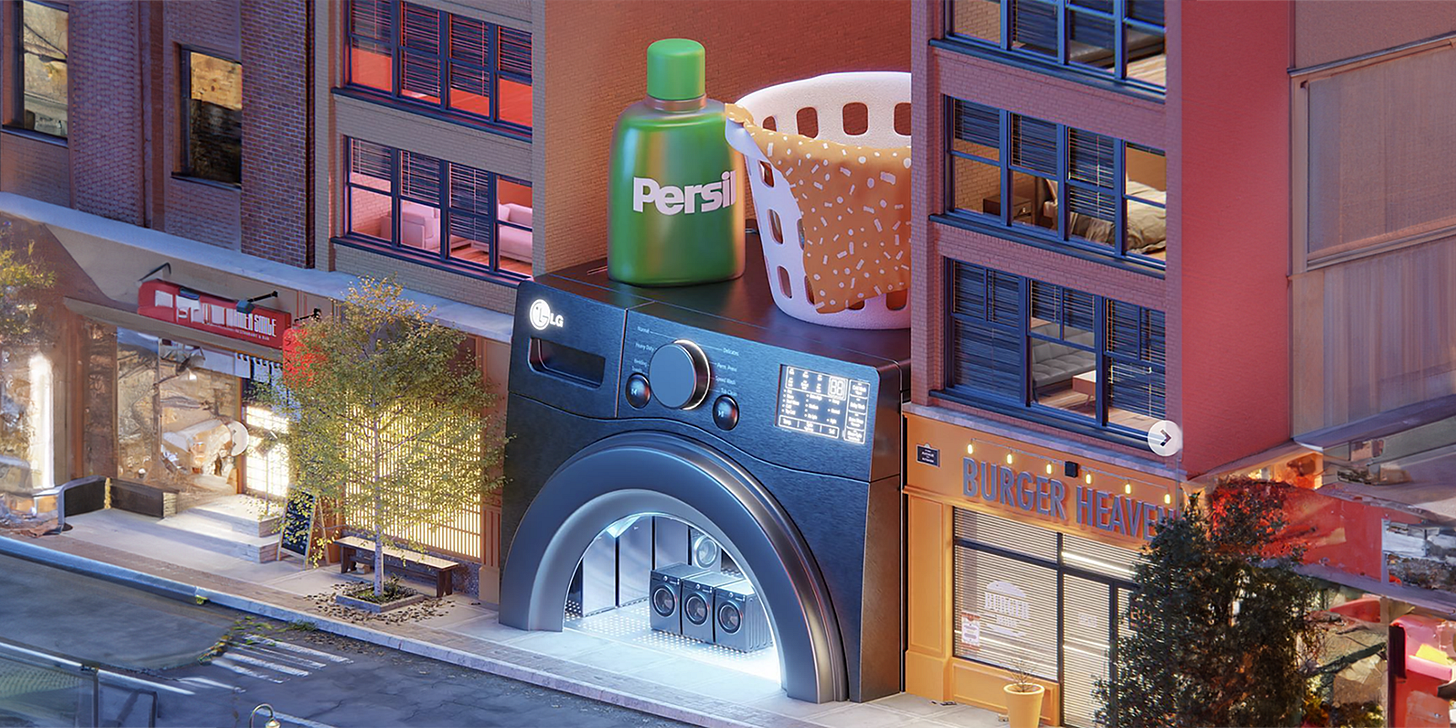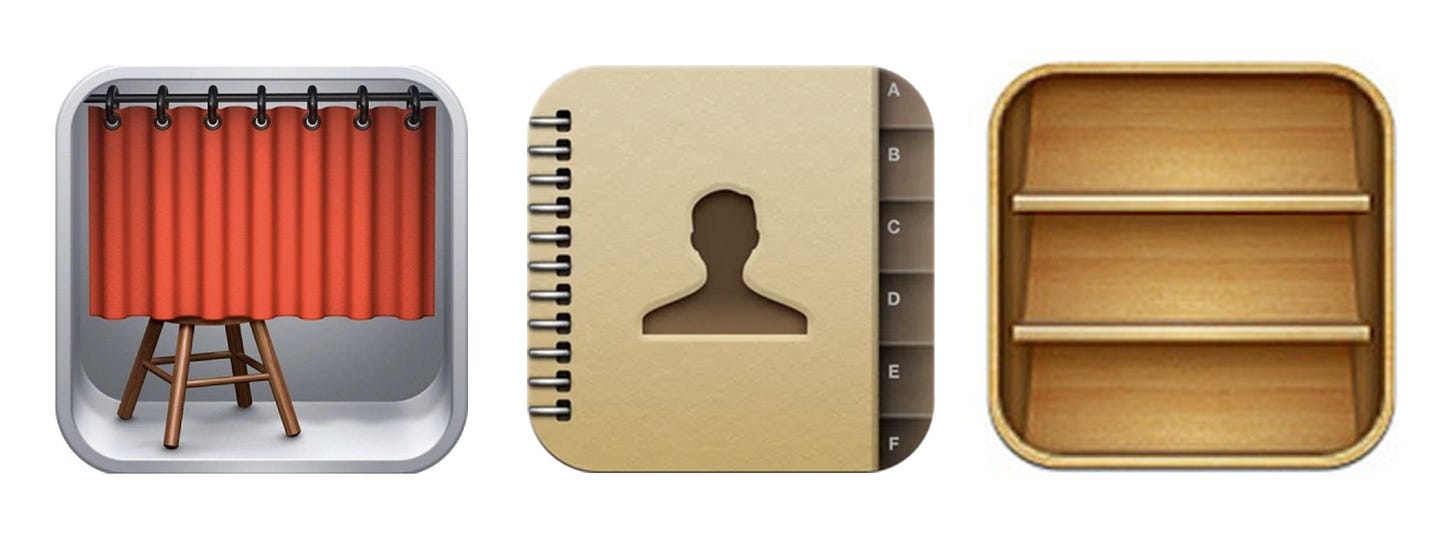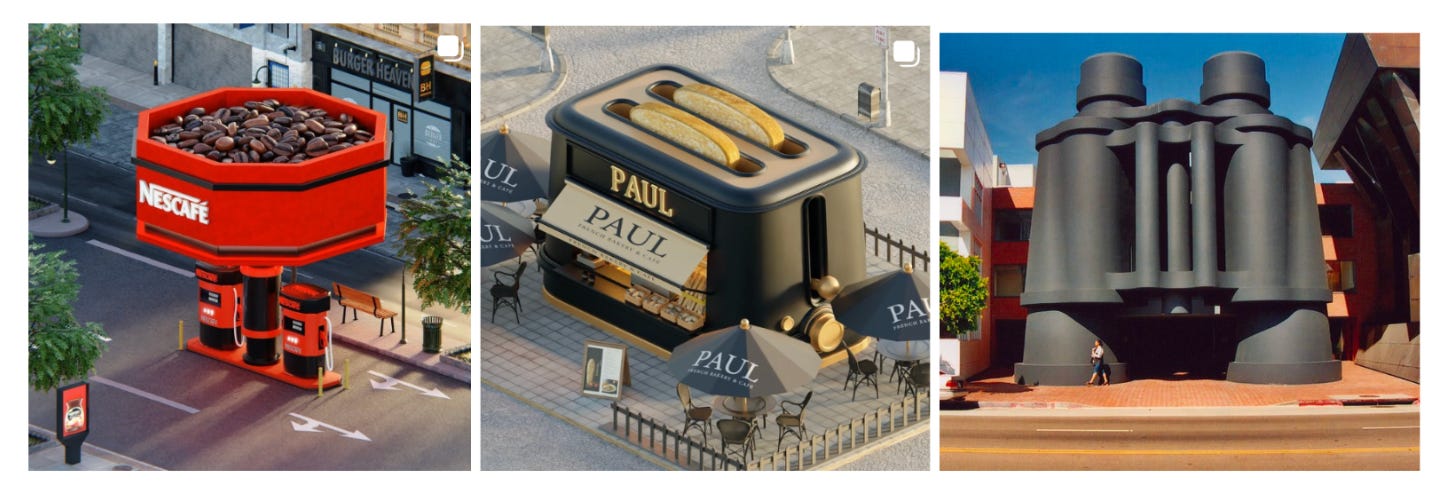Screw The Skeuomorph
Why post modern architects are the future of Web3 experiences.
If my avatar doesn't have legs, why do I need shoes? Why does every store in Decentraland have neat rows of rails with coat hangers and changing rooms with curtains? Why did the KAWS exhibition in Fortnite take place in a building with a roof where picture frames hung on walls?
Why, in a universe with no limits, no gravity and only the boundless imagination of its creators do things and products and experiences look exactly like they do in our world, the so-called Real World?
It's because of a phenomenon known as skeuomorphing.
Skeuomorphing exists when a new object retains ornamental design cues from structures that were necessary in the original. A skeuomorph employs elements that, while essential to the original object, serve no pragmatic purpose in the new system.
Skeumorphs surround us. Modern architecture emulates classical buildings with non structural columns. Electric candles flicker in restaurants. That plastic table, patterned so it looks like wood. The alloy wheels so beloved by the Fast & the Furious with their elaborate yet entirely decorative 'wheel spokes.'
Skeuomorphism followed us into the WEB2 world. Think of the phone booth on the early macbook with its red curtain. The satisfying crumpling paper sound when deleting a file is a sonic skeuomorph. See also the 'old phone' ringtone and the icons themselves. The phone icon looks like an analogue receiver, the original calendar icon emulated the analogue desk diary complete with ring binder, the notes looked like yellow legal pads. Even the place you kept ebooks looked like a timber grained shelf.
Web2 icons
There is a reason for the abundance of skeuomorphing and it typically exists to make something new feel familiar. Steve Jobs was a fan who saw it as a way to speed understanding, smooth acclimation and accelerate user adoption.
Skeuomorphism has been described as a bridge that leads people from 'what is' to 'what will be' - providing familiarity to ease the burden of transition. However, when it comes to experiences and products in the metaverse I can't wait to leave the bridge behind and leap into the possibilities web3 enables.
Experiences in a Web 3 World start to get exciting when we let our imagination do the talking and let go of what's gone before. In a virtual world the gloves are off and anything goes. We aren't constrained by climate, gravity or even common sense. Let's leave the floating keyboard of the VR meeting room behind and embrace the kind of CX seen at the 'Distracted Globe' zero gravity club from the OASIS.
I am inspired by the imagination of concept stores designed by Eslam Mhd and see similarities with the postmodern architecture of Frank Gehry and Jorn Utzon.
Eslam Mhd & Frank Gehry
In fact, the metaverse could be the mecca for the resurgence of postmodernism. The eclectic, colorful and over the top style of architecture where 'less is a bore' and 'more is more'. Who doesn't want to see more offices shaped like binoculars or opera houses in the shape of sailing boats?
Let's put postmodern architects in a room with UX designers, slap on the Vision Pros and let the web3 world bring their brains to life. A Frank Gehry Fortnite Island Masterplan? Yes please. A Gucci store in Decentraland designed by the MVRDV studio would be literally out of this world and an AirBnB for your first vacation in the metaverse conceived by Studio Mutt would be the epitome of all inclusive.
When it comes to experience design let's squint a bit and give the skeuomorph the slip, to push things forward and transform experiences within the emerging realities we must think beyond replication, bring in voices from other disciplines and boldly go where no one has gone before.



